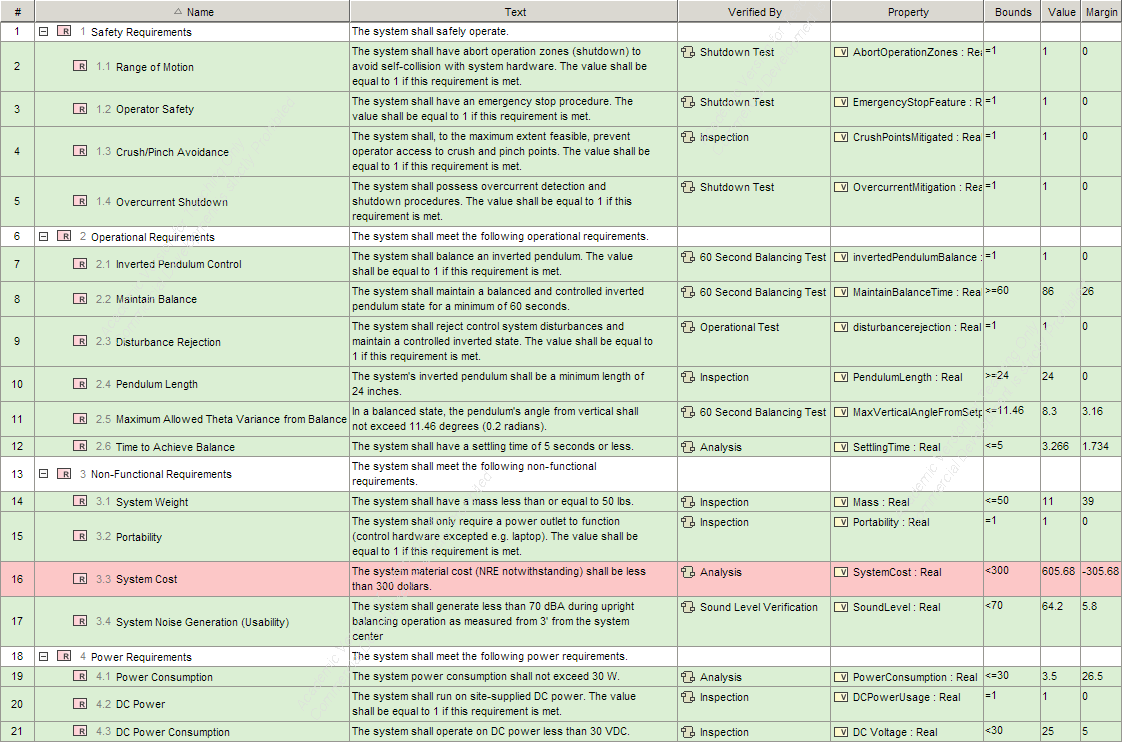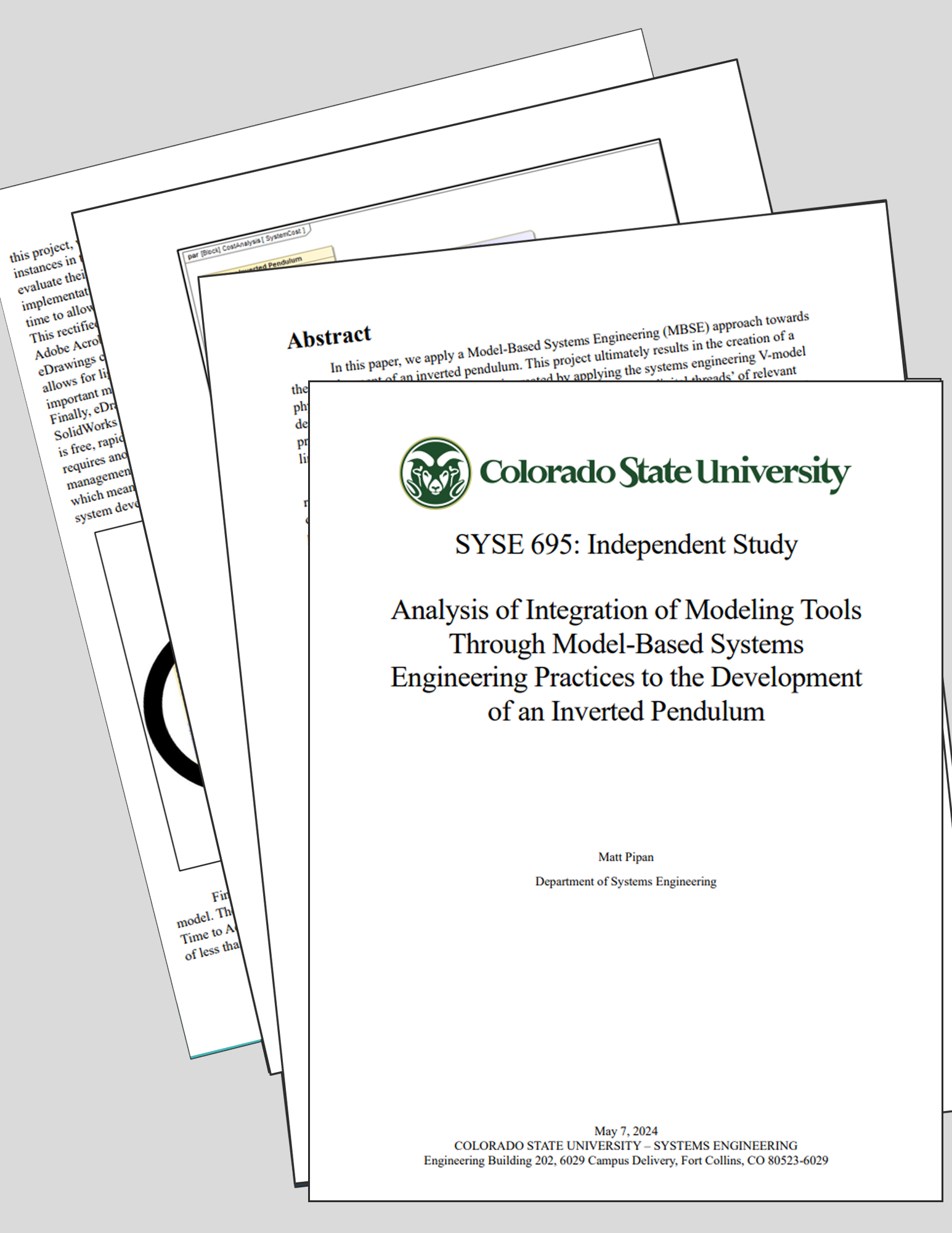Application of Model-Based Systems Engineering to the Development of an Inverted Pendulum
The Project
Summary
In this project, I applied a Model-Based Systems Engineering (MBSE) approach towards the development of an inverted pendulum. This project ultimately results in the creation of a physical hardware demonstration that is created by applying the systems engineering V-model development cycle. Furthermore, this project integrates multiple ‘digital threads’ of relevant project information into a single source of truth MBSE model and explores different options for linking system information such as simulation data, 3D CAD model data, and datasheets.
-
An inverted pendulum is an inherently unstable system consisting of a freely-swinging rod attached to a motorized cart.
Using sensors to measure the angle of the pendulum and the position of the cart allows me to balance the inverted pendulum in a vertical position, thereby creating a stable system from a naturally unstable system.
-
An inverted pendulum is a popular, high-complexity challenge for controls engineering.
Designing and tuning a control loop allows one to automatically balance the pendulum in an upright position. Because of the system’s complexity, this project was undertaken as an opportunity to independently work through the product lifecycle while applying systems engineering principles to deepen my understanding of the tangible benefits of systems engineering in an appropriately scoped challenge.
This MBSE approach utilizes the Systems Modeling Language (SysML) and the Magic Systems of Systems Architect (MSOSA) platform to construct the MBSE framework, MATLAB and Simulink to mathematically model the system and control framework, and SolidWorks to physically model the system. Each supporting software package is integrated into the MBSE model to create an authoritative hub-and-spoke model for system analytics that captures everything from system requirements to manufacturing and performance data of a complete system in a single model. To validate the proposed MBSE framework, a physical prototype of the inverted pendulum created in the MBSE model was manufactured and tested. This prototype served to validate the system design and was capable of maintaining balance in the unstable system for over sixty seconds as set forth in the project requirements. In summary, this project contributes to advancing the state of the art of digital engineering by exploring improved mechanisms for interoperability of disparate engineering data packages into a single information hub. Additionally, the application of systems engineering principles to a complex system that spans multiple technical domains in a shortened project lifecycle serves to demonstrate the enhanced effectiveness of projects guided by systems engineering.
This project was made entirely open-source to advance the state of the art of MBSE integration with external tools and to allow others to replicate the project for academic purposes.
The Task
As the capstone project for my Masters of Engineering (M.E.) in Systems Engineering at Colorado State University, I was tasked with exploring a personal thesis related to Systems Engineering.
The design, modeling, and assembly of an inverted pendulum was an opportunity to lead the entire project lifecycle for a product. My background in Mechanical Engineering was critical to designing the physical prototype and my background in Systems Engineering allowed me another opportunity to perform systems engineering activities including creating requirements, managing interfaces, communicating with stakeholders, and integrating multiple disparate systems to verify the system met its requirements and validate that the inverted pendulum met the intention of the project.
The Results
The project was completed on time and met the overwhelming majority of my self-imposed system requirements. Using MBSE software, I performed automated requirement verification by linking relevant project information to the individual requirements connecting to the digital engineering model.
The inverted pendulum system met 16 of 17 identified requirements as illustrated below. The only metric not satisfied by the inverted pendulum system was the estimated system cost. The cost ended up far surpassing the initial cost estimates as a result of the reasons detailed in Section 4.2 of the report (linked above) concerning the linear guides and bearings specified for the linearly moving cart.
This project was donated to the University of Colorado Boulder’s Department of Mechanical Engineering for use as an educational tool for students.
For more information, please contact me, view the demonstration video, or read the published report on the development of the project located on this page.

